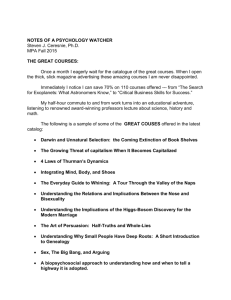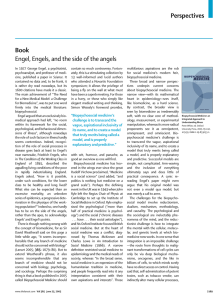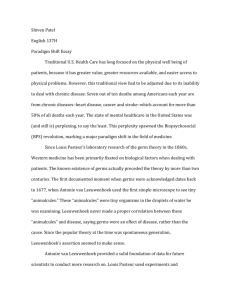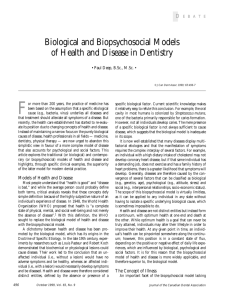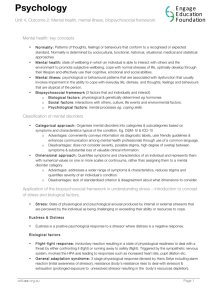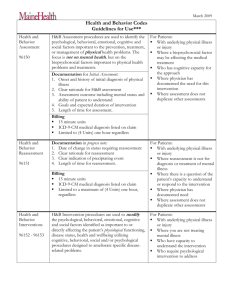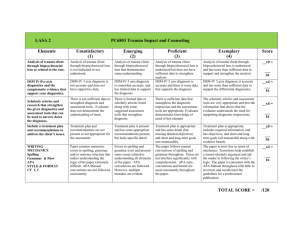Biopsychosocial Model - University of Rochester Medical Center
advertisement
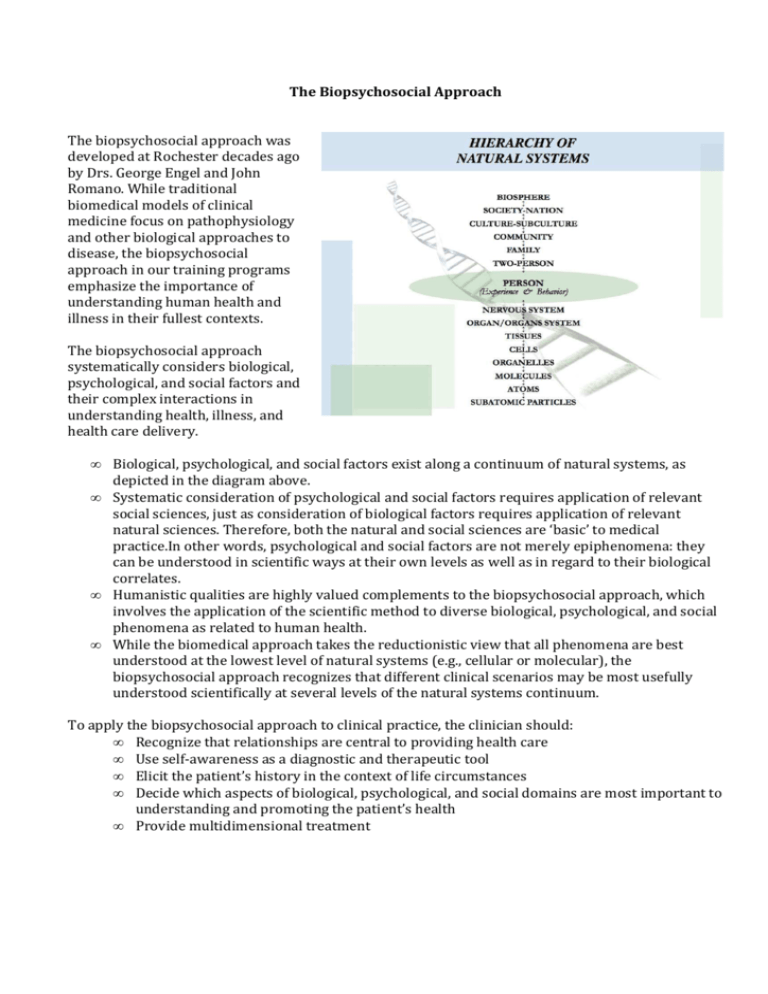
The Biopsychosocial Approach The biopsychosocial approach was developed at Rochester decades ago by Drs. George Engel and John Romano. While traditional biomedical models of clinical medicine focus on pathophysiology and other biological approaches to disease, the biopsychosocial approach in our training programs emphasize the importance of understanding human health and illness in their fullest contexts. The biopsychosocial approach systematically considers biological, psychological, and social factors and their complex interactions in understanding health, illness, and health care delivery. • • • • Biological, psychological, and social factors exist along a continuum of natural systems, as depicted in the diagram above. Systematic consideration of psychological and social factors requires application of relevant social sciences, just as consideration of biological factors requires application of relevant natural sciences. Therefore, both the natural and social sciences are ‘basic’ to medical practice.In other words, psychological and social factors are not merely epiphenomena: they can be understood in scientific ways at their own levels as well as in regard to their biological correlates. Humanistic qualities are highly valued complements to the biopsychosocial approach, which involves the application of the scientific method to diverse biological, psychological, and social phenomena as related to human health. While the biomedical approach takes the reductionistic view that all phenomena are best understood at the lowest level of natural systems (e.g., cellular or molecular), the biopsychosocial approach recognizes that different clinical scenarios may be most usefully understood scientifically at several levels of the natural systems continuum. To apply the biopsychosocial approach to clinical practice, the clinician should: • Recognize that relationships are central to providing health care • Use self-awareness as a diagnostic and therapeutic tool • Elicit the patient’s history in the context of life circumstances • Decide which aspects of biological, psychological, and social domains are most important to understanding and promoting the patient’s health • Provide multidimensional treatment The Biopsychosocial Approach REFERENCES Engel GL: The need for a new medical model: a challenge for biomedicine. Science 1977;196:129-136. Engel GL: The clinical application of the biopsychosocial model. Am J Psychiatry 1980;137:535-544. Frankel RM, Quill TE, McDaniel SH (Eds.): The Biopsychosocial Approach: Past, Present, Future.University of Rochester Press, Rochester, NY, 2003. Borrell-Carrió F, Suchman AL, Epstein RM: The biopsychosocial model 25 years later: principles, practice, and scientific inquiry. Ann Fam Med 2004;2:576-582. Cohen J, Brown Clark S: John Romano and George Engel: Their Lives and Work.University of Rochester Press, Rochester, NY, and Boydell and Brewer Limited, Suffolk UK, 2010.

